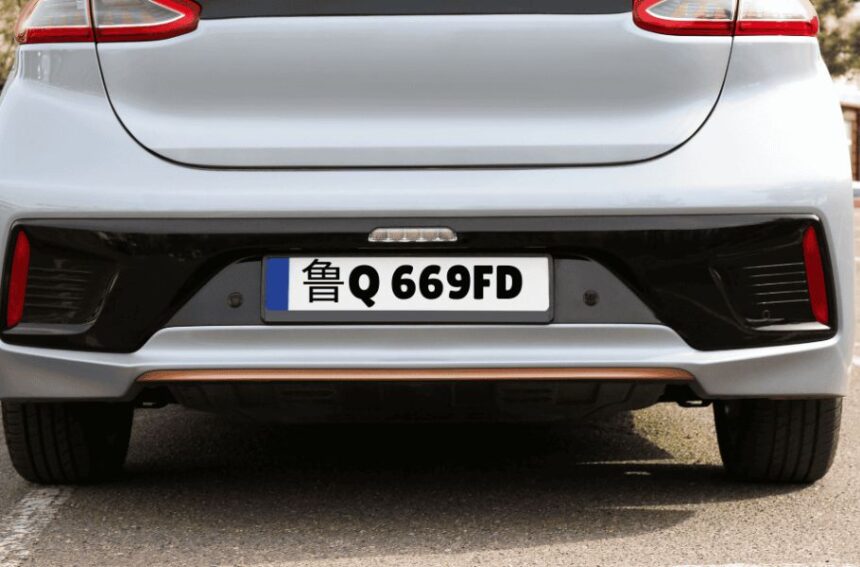Chinese license plates 鲁q 669fd follow a unique system of identification. Each plate begins with a Chinese character that indicates the province of registration, followed by a Latin letter that corresponds to a specific city or region within that province. The combination of numbers and letters that follow acts as a unique identifier for the vehicle. In the case of 鲁Q 669FD, we are dealing with a license plate that begins with “鲁,” the abbreviation for Shandong Province.
Breaking Down the Code
The first character “鲁” (Lu) represents Shandong, a coastal province in eastern China. It is known for its historical importance, industrial significance, and being the birthplace of Confucius. The letter Q following the character signifies a particular city or administrative division within the province. The remaining alphanumeric code 669FD is a unique identifier that distinguishes one vehicle from another.
Significance of 鲁Q License Plates
The license plate 鲁Q holds specific meaning within China’s vehicle registration system. Like all Chinese license plates, each part of this code carries important information about the origin, categorization, and permitted usage of the vehicle it’s attached to. In this section, we’ll explore the full significance of 鲁Q license plates — not just from an administrative point of view, but also from legal, social, and cultural perspectives.
Geographic Representation
License plates beginning with 鲁Q are generally believed to be issued in the Linyi region of Shandong Province, although Chinese license plate codes can be reassigned or vary over time. Linyi is a prominent city in southern Shandong known for commerce, logistics, and manufacturing industries.
Legal and Regional Implications
In China, where your car is registered matters. Cities and provinces have different policies for road usage, traffic regulations, and emissions. A car registered in Linyi (鲁Q) may face different toll rates or traffic restrictions in Beijing, for example. That means the license plate is more than just a tag; it’s tied to regional identity and administrative rules.
Why Is 鲁Q 669FD Gaining Attention?
In recent times, the license plate 鲁Q 669FD has sparked growing curiosity across online platforms, discussion forums, and even among those analyzing traffic footage and viral videos. But what is it about this specific license plate that is capturing attention? While, on the surface, it may appear to be just another ordinary vehicle registration code, deeper inquiry reveals several intriguing possibilities that may explain its sudden rise in online interest and digital conversations.
Internet Buzz and Curiosity
Recently, search data and social media trends have shown increased interest in specific license plates, including 鲁Q 669FD. Such interest may stem from viral videos, suspicious activities, or media coverage involving this license plate. Sometimes, a plate becomes popular simply because it’s caught on camera during a public incident, traffic violation, or newsworthy event.
Possible Association with Notable Events
In several online discussions, license plates like 鲁Q 669FD are connected with:
- Traffic violations caught on surveillance
- Unusual driving behavior caught on dashcams
- Government-related or commercial vehicle tracking
- Speculation over VIPs or corporate use
While there is no confirmed incident related directly to 鲁Q 669FD that is publicly documented, its structure and pattern are being analyzed across various forums.
Structure and Format of Chinese Plates Like 鲁Q 669FD
Understanding the structure and format of Chinese vehicle license plates is essential to decoding what a plate like 鲁Q 669FD actually means. China uses a standardized and regulated format for all vehicle registrations, and each character or number on the plate carries significant information. Let’s break down the full structure of this plate and explain each of its components.
The Pattern Explained
Chinese license plates typically follow this format:
[Province Character][City Letter] [Numeric/Alphabetic Code]
For example:
鲁A 12345 → Registered in Jinan, Shandong
鲁Q 669FD → Likely from Linyi, Shandong
The part “669FD” is made up of 5 characters: a combination of numbers and uppercase letters that increase the possibilities for unique vehicle identification.
Special Plates vs Regular Plates
The structure of 鲁Q 669FD suggests that it is a standard private vehicle plate. In contrast, police, military, diplomatic, and government plates follow slightly different formats, colors, or prefixes. Some use distinct plate colors like black, red, or yellow. For instance:
White plates with blue characters: Regular private cars
Yellow plates: Commercial vehicles or larger transport trucks
Black plates: Foreign businesses or consulate cars
Red plates: Military vehicles
Role of Shandong in China’s Road Network
Shandong is a major transportation hub. Its cities are connected via national expressways, high-speed railways, and maritime routes. Linyi, a city tied with 鲁Q, plays a vital role in logistics and trade. It houses one of the biggest wholesale markets in China, which means the region is bustling with cargo vehicles, private cars, and logistics fleets.
Vehicle Density and Plate Codes
Because of the large number of vehicles in Shandong, the license plate system has had to evolve. From the original 鲁A to 鲁Z, each letter corresponds to a city or county. This helps in categorizing and identifying vehicles by location for administrative, legal, and statistical purposes.
Concerns with Online Exposure
License plates like 鲁Q 669FD have occasionally appeared in user-generated videos or online surveillance screenshots. In such cases, people are often concerned about privacy. Revealing plate numbers online can result in doxing, false accusations, or unwanted attention.
Government Monitoring and Surveillance
China’s advanced surveillance system uses Automatic Number Plate Recognition (ANPR) to monitor vehicles. If 鲁Q 669FD were ever involved in a public incident, it would be immediately logged and traceable via traffic cameras. Authorities use this data to enforce traffic laws, catch suspects, and analyze movement patterns of vehicles.
Influence on Vanity Plates
Although 鲁Q 669FD is a standard plate, the combination “669” could be part of a vanity number if chosen deliberately. Wealthy individuals often pay large sums for desirable license plates with lucky numbers, like 888 or 666, which have deep cultural appeal in China.
Real-World Uses of Plates Like 鲁Q 669FD
License plates such as 鲁Q 669FD are not just government-issued identifiers for vehicles they serve practical purposes across a wide range of real-world applications. Registered in Linyi, Shandong Province, 鲁Q 669FD reflects a common format for civilian and commercial vehicles in China. While it may appear as just a routine plate, vehicles with such identifiers are often central to everyday operations, from transport and logistics to law enforcement visibility and data surveillance systems. This section explores how plates like 鲁Q 669FD are actually used in daily life and how they impact society at large.
Logistics and Transport Sector
Given that Linyi is a logistics center, many vehicles registered under 鲁Q plates are used for transporting goods. These can include delivery vans, cargo trucks, and utility vehicles, which are essential for domestic trade.
Ride-Sharing and Rental Services
Some vehicles with 鲁Q tags are part of fleet services like Didi Chuxing (China’s Uber equivalent), especially in urban centers. These vehicles usually have blue plates and follow similar identification patterns as private cars.
Plate Cloning and Fraud Risks
One problem arising in China is license plate cloning where criminals duplicate someone else’s plate to avoid fines or commit illegal acts. If 鲁Q 669FD were ever cloned and used in multiple locations simultaneously, authorities would flag it for investigation.
Penalties for Misuse
Using a fake or altered plate like 鲁Q 669FD comes with strict penalties in China. Offenders face heavy fines, vehicle impoundment, and even jail time in serious cases. The plate itself is registered and monitored in real-time databases, making such frauds easier to detect now than ever before.
Conclusion
The license plate 鲁Q 669FD may seem like just a combination of letters and numbers, but its significance runs deeper. From representing a specific region in China’s vast transportation network to sparking curiosity online, every aspect of this plate can tell a story. Whether it’s a sign of a busy logistics route, a symbol of luck in numerology, or simply an identifier tied to a larger surveillance system, 鲁Q 669FD exemplifies how much information a license plate can hold. Understanding these details enhances our awareness of how modern vehicle identification systems work not just in China, but as a global example of precision, policy, and sometimes, mystery.
FAQ’s About 鲁q 669fd
Q1: What does 鲁Q 669FD mean?
鲁Q 669FD is a Chinese license plate where 鲁 represents Shandong Province and Q likely refers to the city of Linyi. The code 669FD uniquely identifies the vehicle.
Q2: Is 鲁Q 669FD a special or regular license plate?
It appears to be a standard private vehicle license plate based on its format and structure.
Q3: Why is 鲁Q 669FD being searched online?
It may be related to social media videos, traffic incidents, or general curiosity about its meaning and origin.
Q4: Are license plates with 669 considered lucky?
Yes, the numbers 6 and 9 are often viewed as lucky in Chinese numerology, symbolizing smooth progress and long-lasting success.
Q5: Can license plates in China be customized?
While basic plates follow strict formats, some regions allow auction-based vanity numbers, especially those containing culturally significant sequences like 888 or 666.



